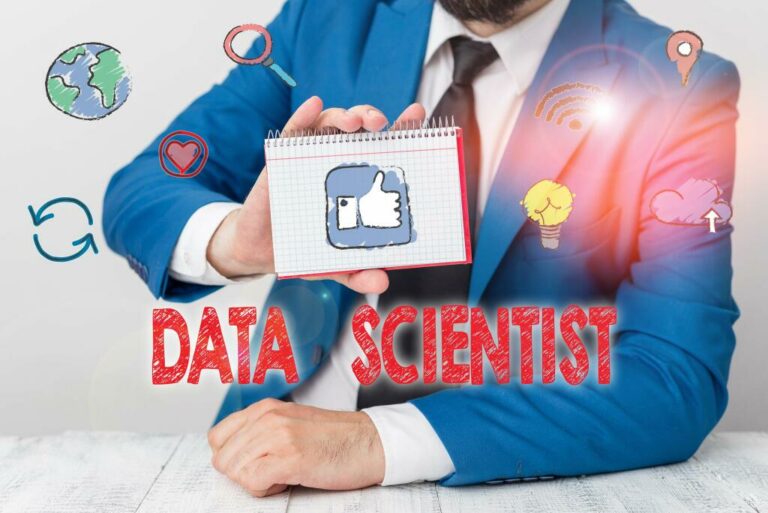Content
Besides SDLC, there is another concept that is a cornerstone for the entire lifecycle of product and system planning. Systems Analysis & Design is a process during which specific information systems are developed that effectively support hardware, software, or people. https://globalcloudteam.com/ These can be solved during the maintenance phase when the whole system is refined to improve performance, or to meet new requirements. Sometimes staff will need additional training to meet this goal, new procedures must be put in place, or updates must be made.
There was a growing need for building large company systems, but the consumers and users in those days were far less demanding. They did not have a proper concept of what the possibilities would be on the short term. Checks and balances are built into SDLC models to ensure that all software is thoroughly tested before being integrated into larger source code. The information system will finally be built and incorporated into its environment.
Integration and Testing
You will understand what an SDLC is, 7 stages of system development life cycle, and why it is vital by reading it. Rapid application development, the unified process, extreme programming, and scrum have come to be known as ________. The analysis phase of the SDLC involves a complete, detailed analysis of the systems needs of the end user. Learn more about SDLC methodologies and which one to choose for your project in our new article. You will find there many graphic representations of the above mentioned models to give you an even better insight into the topic.

Before any system planning is done, a feasibility study should be conducted to determine if creating a new or improved system is a viable solution. This will help to determine the costs, benefits, resource requirements, and specific user needs required for completion. The development process can only continue once management approves of the recommendations from the feasibility systems development life cycle in order study. In the seventh and final phase, end users can fine-tune the completed system as necessary if they want to improve performance. Through maintenance efforts, the team can add new capabilities and features and meet new requirements set by the client. In the fifth phase, systems integration and testing are carried out by Quality Assurance professionals.
C) The company conducts a variety of feasibility studies on the new system. D) The new system is developed, tested, and placed into production. This stage includes the development of detailed designs that brings initial design work into a completed form of specifications.
SDLC: 7 Phases or Stages of the System Development Life Cycle, Models, Perks & More
Several systems development frameworks have been partly based on SDLC, such as the structured systems analysis and design method produced for the UK government Office of Government Commerce in the 1980s. The main purpose of this step is to identify the scope of the problem and come up with different solutions. Some of the things to consider here include costs, benefits, time, resources, and so on. This is the most crucial step because it sets the tone for the project’s overall success.
Final Data from AlloVir’s Phase 2 Study of Posoleucel for Multi-Virus Prevention to be Highlighted in Oral Presentation at 64th American Society of Hematology Annual Meeting – Business Wire
Final Data from AlloVir’s Phase 2 Study of Posoleucel for Multi-Virus Prevention to be Highlighted in Oral Presentation at 64th American Society of Hematology Annual Meeting.
Posted: Thu, 03 Nov 2022 13:07:00 GMT [source]
A) A catastrophic system failure that cost lives and millions of pounds in losses. B) A successful implementation of SAP that they hope to expand to other areas of the company soon. C) A successful pilot test of the system that led to a successful global rollout of SAP.
Work breakdown structured organization
SDLC and SAD are cornerstones of full life cycle product and system planning. Which of the following best describes the planning phase of the systems development life cycle? A) Plan the detailed steps that will take place during the implementation phase. B) Systems analysts outline all features required in the new system, including screen layouts and business process diagrams. C) Summarize the business needs of the company with a high-level view of the project. D) The business determines its information needs and designs the system to meet those needs.
- The second phase of the systems development life cycle is ________.
- If this is done in the production environment, this is usually done by a Quality Assurance professional.
- The task to be addressed might be divided into several subtasks , each representing a different business, technological, or other areas of interest.
- Additionally, this framework ensures that the system is developed within the given time constraints and budget.
Implementation of the software development life cycle should not be the final step. If you care about great results , then you have to monitor the SDLC with a dedicated management system. By doing so, it is possible to implement additional analytics or monitor possible bugs.
Gathering all of the specific details required for a new system, as well as defining the first prototype concepts, is part of the analysis step. A business process need not relate to any information system, but an information system relates to at least one business process. Which of the following control frameworks most closely corresponds to the phases of the SDLC? The 100% Rule is a rule requiring 100% planning of all external tasks. The Rule states that if a project is more than 15 percent over budget or 15 percent off the desired schedule, it will likely never recoup the time or cost necessary to be considered successful.
Waterfall model
The development of a SOW does not occur during a specific phase of SDLC but is developed to include the work from the SDLC process that may be conducted by external resources such as contractors. Which of the following best describes the implementation phase of the systems development life cycle? A) Detailed specifications are laid out for the new system, including screen layouts and business process diagrams.

Because this document determines all future development, the stage cannot be completed until a conceptual design review has determined that the system specification properly addresses the motivating need. These design elements are intended to describe the system in sufficient detail, such that skilled developers and engineers may develop and deliver the system with minimal additional input design. During this step, consider all current priorities that would be affected and how they should be handled.
Systems development life cycle
A further priority is to find and fix bugs and errors as soon as possible in order to deploy high-quality code. To make the developers’ job easier, it is worth preparing detailed documentation as a guide to better understand the application’s aim and purpose. The team begins to create the user interface and choose the platforms on which the software will run based on outlined application designs. The SDLC phases serve as a programmatic guide to project activity and provide a flexible but consistent way to conduct projects to a depth matching the scope of the project. Each of the SDLC phase objectives are described in this section with key deliverables, a description of recommended tasks, and a summary of related control objectives for effective management.

The life cycle approach is used so users can see and understand what activities are involved within a given step. It is also used to let them know that at any time, steps can be repeated or a previous step can be reworked when needing to modify or improve the system. Traditionally, the systems-development life cycle consisted of five stages. Increasing the number of steps helped systems analysts to define clearer actions to achieve specific goals.
Analysis and defining requirements
To understand the SDLC-concept, the term system needs to be defined. A system is, at the very least, a component, and possibly a combination of various components of information technology. It’s critical to follow the seven phases of the System Development Life Cycle whenever you’re working on a new product. At the start of development, there was no idea how the final product would look. The design stage is required before moving on to the primary developer stage.
Phase 5: integration & testing
The development phase marks the end of the initial section of the process. The development stage is also characterized by instillation and change. Continuous Integration helps to coordinate the team’s work and focuses on building code in small batches. Here, automation tools like Jenkins are helpful for testing and merging new code as seamlessly as possible. CI ensures that developers use compatible technologies instead of building the project independently and trying to integrate their separate parts during the final development stages.
Another part of this phase is verification and validation, both of which will help ensure the program”s successful completion. The second phase is where businesses will work on the source of their problem or the need for a change. In the event of a problem, possible solutions are submitted and analyzed to identify the best fit for the ultimate goal of the project. This is where teams consider the functional requirements of the project or solution. It is also where system analysis takes place—or analyzing the needs of the end users to ensure the new system can meet their expectations. Systems analysis is vital in determining what a business”s needs are, as well as how they can be met, who will be responsible for individual pieces of the project, and what sort of timeline should be expected.
HLD – High-Level Design – Architects and senior developers create the architecture of the software product to be built. B) Increases to a project’s requirements after the project has started. D) The gradual completion of project tasks, eventually resulting in the end of the project. The modern concept of project management began with which of the following?
It is critical for the project manager to establish and monitor control objectives during each SDLC phase while executing projects. Control objectives help to provide a clear statement of the desired result or purpose and should be used throughout the entire SDLC process. Control objectives can be grouped into major categories , and relate to the SDLC phases as shown in the figure. In systems design, the design functions and operations are described in detail, including screen layouts, business rules, process diagrams, and other documentation. The output of this stage will describe the new system as a collection of modules or subsystems.
D) The gender of the user; How much the new system helps the user complete work-related tasks. Which of the following does not describe the project manager in an IT project? A) The project manager is the lead member of the project team, and is responsible for the project. C) The project manager advocates for the project to company management and outside entities. D) The project manager analyzes the project charter with respect to project objectives and requirements.
